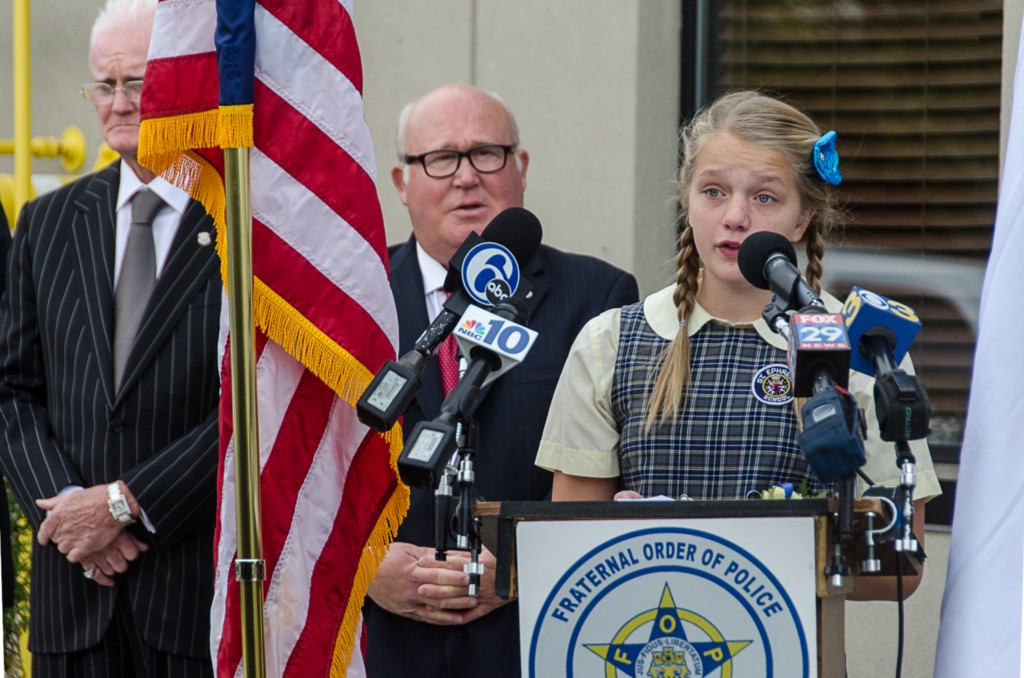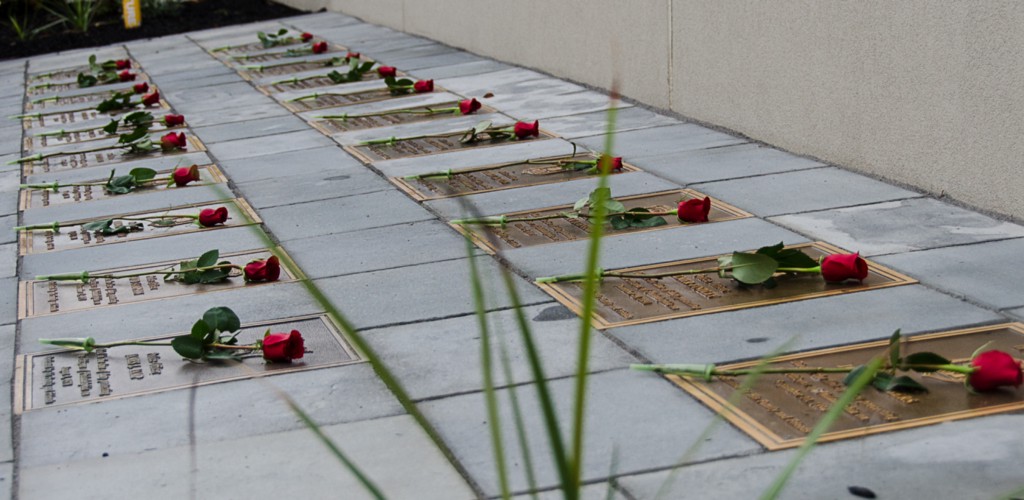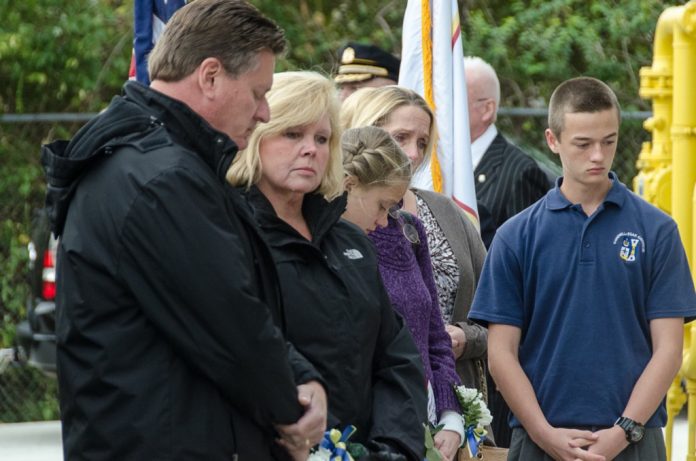Officer James Ramp’s son, James Jr. (far left), has a moment of silence with family members. His father died in 1978 during the MOVE standoff. BILL ACHUFF / FOR THE TIMES
Being a cop in the “olden” days wasn’t much safer than it is today.
Throughout most of the 19th century and into the early 20th, Philadelphia police officers faced many of the same daily perils as their contemporary counterparts do, while confronting many unique dangers of antiquity.
Last Wednesday, members of the city’s Fraternal Order of Police and their supporters formally dedicated 21 plaques at their union hall to memorialize officers who were killed in the line of duty. Nineteen of those deaths occurred between 1828 and 1908, long before the advent of the modern police department and when cops were as likely to be thrown from a horse or stomped in a riot as shot by a violent criminal.
The ceremony at FOP Lodge 5’s new Caroline Road headquarters also recognized two relatively modern-day slain officers. David F. Sampson died in 1973 after a car struck him while he was assisting a stranded motorist on Woodhaven Road near Academy Road. James J. Ramp died in 1978 as a result of a gunshot wound he suffered during a shootout with MOVE members on the 300 block of N. 33rd St.
“Even though I never had a chance to meet him, I know my grandfather David Sampson was a great man,” Delaney Sampson, a sixth-grade student at St. Ephrem’s School in Bensalem, told hundreds of gathered police officers and their families.
James Ramp Jr., son of the slain officer, said that the FOP and Philadelphia Police Department have continued to “be very helpful, respectful and supportive” to his family since his father’s killing.
The array of 21 newly installed memorial plaques is an opportunity “to also be mindful of the officers who have passed and who do not have families alive today,” Ramp said.
Those heroes include Watchman Steven Heimer, the city’s first police “line of duty” death. Heimer died in 1828 of injuries he suffered while intervening in a riot of weavers. Twenty-eight years later, Watchman Cornelius “Neil” Mooney was shot and killed during another riot.
In 1876, Officer Henry O’Donnell was overcome by sunstroke while working the Centennial Exhibition and later died. In 1887, Officer George Jackson was killed by a thrown paving stone.
In 1900, Officer Charles O. Conaway saved a woman from an onrushing trolley, only to place himself in the trolley’s path. He was crushed to death. Two years later, Officer Edward George died after a trolley struck a police horse wagon in which he was riding.
In 1908, Officer Scott H. Shelley was stomped to death by a runaway horse.
According to the Officer Down Memorial Page website, 256 Philadelphia police have been killed in the line of duty since 1828, including 132 as a result of gunfire and 68 as a result of automobile, motorcycle, train or streetcar crashes.
Deputy Commissioner Thomas Wright said that the deceased officers’ families can take some comfort in that their loved ones gave their lives protecting the citizens of the city.
“I am humbled by their actions, the legacy they left behind and the legacy they earned,” Wright said.
Attorney Jimmy Binns founded the Hero Plaque Program in 2001 to memorialize officers killed in the line of duty. Daniel Faulkner was the first honoree. Since then, the program has expanded to include Philadelphia firefighters and other first responders from the city’s suburbs and South Jersey. The program has honored 112 Philadelphia police officers among 260 men and women in uniform.
“We will continue the program until we honor each and every police officer and firefighter who has given his life to protect the citizens of Philadelphia,” Binns said. ••

Officer David F. Sampson’s granddaughter spoke during the dedication. Sampson died in 1973 after a car struck him while he was assisting a stranded motorist on Woodhaven Road. BILL ACHUFF / FOR THE TIMES

Everlasting heroism: Members of the city’s Fraternal Order of Police and their supporters dedicated 21 plaques to memorialize officers who were killed in the line of duty. BILL ACHUFF / FOR THE TIMES





